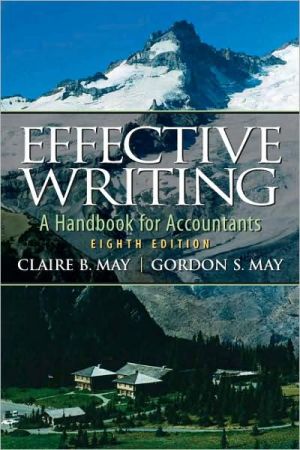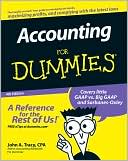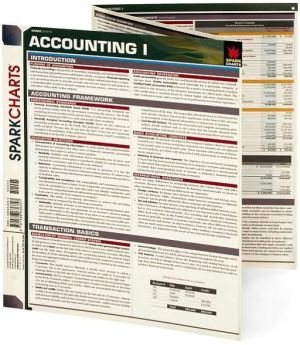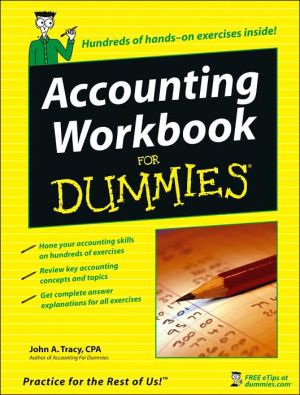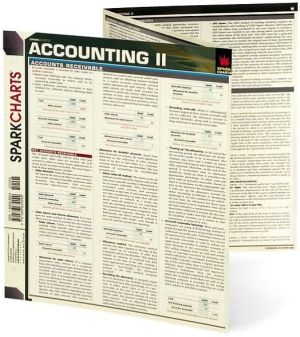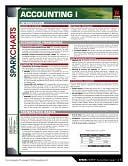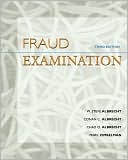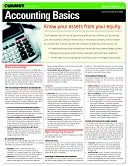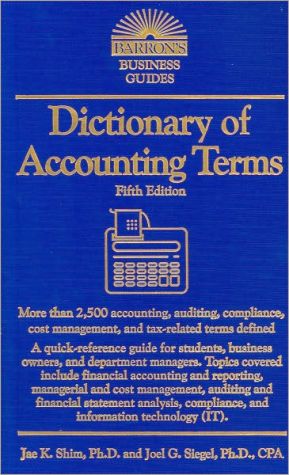Effective Writing: A Handbook for Accountants
The best-selling book of its kind, discusses the communication, both written and oral, actually done by professional accountants.It uses real-world accounting situations and includes major sections on Communication Strategies, Business Documents, and Oral Communication. This book is written for the accountant who wants to sharpen their communication and critical thinking skills in order to be more effective in the workplace.\ For Accounting, Business Communication, and Technical Writing courses.
Search in google:
Intended for accounting students, this text covers effective communication strategies, preparation of business documents, and improvement of writing and presentation skills. This sixth edition contains new chapters on accounting research and oral presentations. Claire May is academic director of general education at The Art Institute of Atlanta. Gordon May teaches accounting at the University of Georgia. Annotation ©2003 Book News, Inc., Portland, OR
Communication Strategies 1Accountants as Communicators 1What Do Accountants Write? 3How Well Do Accountants Write? 4What Makes Writing Work? 4You Can Become a Good Writer 5Writing and Other Forms of Communication 6Reading 6Listening 7Speaking 7Writing and Problem Solving 7Writing and Critical Thinking 8Communications and Ethics 9Exercises 10The Writing Process: An Overview 13Getting Started: Identifying Purpose 13Thinking Critically about the Issues 16Analyzing the Readers 16Getting Your Ideas Together 19Gathering Information 19Generating Ideas 19Arranging Ideas: Organization 20Writing the Draft 22Revising the Draft 23The Final Draft 24Dealing with Writer's Block 25Writing Under Pressure 25Writing at the Computer 26Help from Colleagues: Critiquing 26Exercises 27The Flow of Thought: Organizing for Coherence 30Writing with Unity 30Using Summary Sentences 31Responding to Readers' Questions and Concerns 32Transitions 33Transitional Words and Phrases 34Repetition of Key Words and Phrases 35Pronouns Used to Achieve Coherence 37Problems with Transitions 37Paragraphs 38Length 38Structure 39Paragraph Development 41Discussion Questions and Essays 43Discussion Questions 43Essays 43Applying Essay Techniques to Other Kinds of Writing 46Sample Essay 46Exercises 48A Sense of Style: Writing with Conciseness and Clarity 51Conciseness 51Unnecessary Words 51Simplicity 53Verbs and Nouns 56Clarity 58Jargon 58Precise Meaning 59Concrete, Specific Wording 62Readable Writing 64Passive and Active Voice 64Variety and Rhythm 67Tone 68Editing for Style at the Computer 69Exercises 73Standard English: Grammar, Punctuation, and Spelling 78Major Sentence Errors 78Fragments 79Comma Splices 79Fused Sentences 80Problems with Verbs 80Tense and Mood 81Subject-Verb Agreement 82Problems with Pronouns 83Pronouns and Gender 84Problems with Modifiers 85Parallel Structure 85Apostrophes and Plurals 86Commas 87Comma Guidesheet 87Colons and Semicolons 89Direct Quotations 90Spelling 92Help from the Computer 93Exercises 97Format for Clarity: Document Design 101Good Design: An Illustration 101A Professional Appearance 105Paper and Print 105White Space and Margins 105Neatness Counts! 106Formatting 106Headings 106Lists and Set-Off Material 107Pagination 108Graphical Illustrations 108Document Design at the Computer 112Exercises 113Critical Thinking 116Making an Argument: The Process 116Reaching Sound Conclusions: Two Approaches to Logic 119Fallacies: Mistakes in Reasoning 122Critical Thinking and Ethical Dilemmas 123Exercises 125Accounting Research 128Research: Basic Guidelines 128Electronic Sources of Information 129Printed Sources of Information 130Note Taking 131Direct Quotation and Paraphrase 132Plagiarism 132Organizing Your Notes and Ideas 133Writing Your Research Report or Memo 133Integrating Notes into Your Writing 134Revising 134Documentation 134Critical Thinking and Technical Accounting Research 136Financial Accounting Research 136Steps in the Financial Accounting Research Process 137Exercises 139Sources of Accounting and Financial Information 144Computerized Reference and Database Services 147Other Printed Sources of Accounting and Financial Information 149Internal Documentation Style 150Endnotes or Footnotes and Bibliography Style 153Business Documents 157Letters 157Principles of Letter Writing 157Planning a Letter 157Organization 158Conciseness and Clarity 159Tone 159Form and Appearance 159Parts of the Letter 162Responding to Correspondence 164Typical Accounting Letters 165Engagement Letters 165Management Advisory Letters 168Tax Research Letters 170Standardized Letters: A Caution 173Letters Sent via E-Mail 173Exercises 174Memos and E-mail 182Memos: Some Basic Principles 182The Parts of a Memo: Organizing for Coherence 183Concise, Clear, Readable Memos: Style and Tone 184Formats 185Sample Memos 189Memos to Clients' Files 189Memos as Part of Working Papers 189E-Mail 190Write a Strong Subject Line 190Put Important Ideas First 191Use Conventional Grammar and Mechanics 191A Few Cautions 191Exercises 192Reports 199Planning a Report 199The Parts of a Report 201Transmittal Document 202Title Page 202Table of Contents 203List of Illustrations 203Summary Section 203Introduction 203Body of the Report 204Conclusion 204Appendixes (Optional) 205Notes and Bibliography 204Graphic Illustrations 205Appearance 205Style and Tone 205Exercises 214Writing and Your Career 219Writing Essay Exams: Academic Courses and Professional Certification Exams 219Essay Exams 219Preparation 219Taking the Exam 220Qualities of a Good Essay 222Professional Certification Exams 222Preparing For and Taking the Exam 224Qualities of a Good Answer 229Exercises 229Writing for Employment: Resumes and Letters 234Starting the Job Search: Researching Possible Employers 234Preparing a Resume 235Using a Computer 235Format 237What Not to Put on a Resume 239Writing a Letter of Application 240Writing a Thank-You Letter 241Electronic Submissions 242Exercises 244Writing for Publication 247Planning Your Article 247Research 248Drafting and Reviewing the Article 248Submitting the Article 249Exercises 249Oral Presentations 251Planning the Presentation: Analyzing Purpose and Audience 251Other Things to Consider 252Gathering Information 252Composing the Speech 253Introduction 253Body of the Presentation 253Conclusion 254Making Notes 254Preparing Visual Aids 255The Presentation 256Checking the Arrangements 257Appearance and Dress 257The Presentation: Poise and Confidence 257Eye Contact 258Body Movement and Gestures 258Voice 259Managing Stage Fright 259Special Considerations in Presentations of Financial Information 260A Final Word 261Exercises 266Index 269
